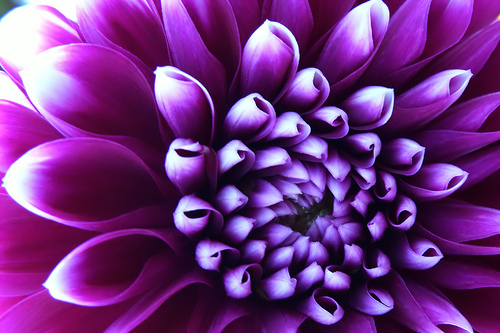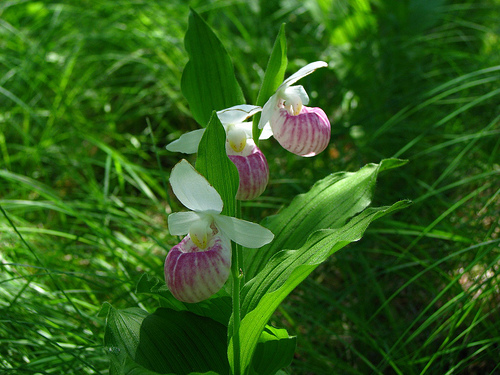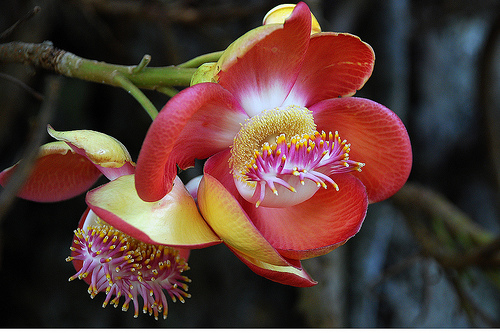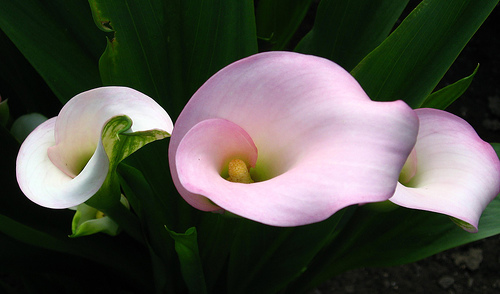





Sweet Pea (Lathyrus odoratus)Sweet Pea is native to the eastern Mediterranean region from Sicily east to Crete. Unlike most peas, the seeds of the sweet pea are poisonous. The seeds contain a neurotoxin, and should not be eaten. The illness caused by the ingestion of sweet peas is known as odoratism, or sweet pea lthyrism.Oleander (Nerium Oleander)Oleander is one of the most poisonous plants in the world and contains numerous toxic compounds, many of which can be deadly to people, especially young children. The toxicity of Oleander is considered extremely high and it has been reported that in some cases only a small amount had lethal or near lethal effects. The most significant of these toxins are oleandrin and neriine, which are cardiac glycosides They are present in all parts of the plant, but are most concentrated in the sap, which can block out receptors in the skin causing numbness. It is thought that Oleander may contain many other unknown or un-researched compounds that may have dangerous effects.Daffodil or NarcissusAll Narcissus varieties contain the alkaloid poison lycorine, mostly in the bulb but also in the leaves . The Narcissus flower is perceived quite differently in the east than in the west. Whereas in the west, the Narcissus flower is seen as a symbol of vanity, in China, the same flower is seen as a symbol of wealth and good fortune.Flatpod Peavine (Lathyrus cicera)Red Pea is the other common name of Flatpod Peavine is a poisonous plant native to Europe, North Africa, and the Middle East, and it is known from other places as an introduced species. This is one pea species known to cause lathyrism. Chinese Wisteria (Wisteria sinensis)Chinese wisteria can displace native vegetation and kill trees and shrubs by girdling them. The vine has the ability to change the structure of a forest by killing trees and altering the light availability to the forest floor. A native of China, it was first introduced into the United States in 1816 for ornamental purposes. All parts of the plant contain a glycoside called wisterin which is toxic if ingested and may cause nausea, vomiting, stomach pains, and diarrhea. Wisterias have caused poisoning in children of many countries, producing mild to severe gastroenteritis.Autumn crocus (Colchicum Autumnale)The plant has been mistaken by foragers for ramsons, which it vaguely resembles, but is a deadly poison due to the presence of colchicine, a useful drug with a narrow therapeutic index. The symptoms of colchicine poisoning resemble those of arsenic and there is no antidote. Despite its toxicity, colchicine is an approved treatment for gout and is also used in plant breeding to produce polyploid strains.Angel’s Trumpet (Brugmansia)The show-stopping hanging trumpet-shaped flowers of angel’s trumpet make this a delight for any garden. It is tropical and grows best in gardens in Zone 9-11, but it certainly can be used as a container plant and brought inside when cool. Angel’s trumpet can be either a shrub or a small tree. Be careful – it’s poisonous! Monkshood (Aconitum variegatum)Like other monkshoods, Columbian Monkshood is a poisonous plant. Columbian monkshood or Western Monkshood is a wildflower native to western North America where it grows in moist areas.
Monkshood (Aconitum variegatum)Like other monkshoods, Columbian Monkshood is a poisonous plant. Columbian monkshood or Western Monkshood is a wildflower native to western North America where it grows in moist areas.

I recently joined Flickr, and I’ve wasted so much time just browsing through peoples’ albums. I am absolutely amazed at how many incredibly talented photographers are out there!
Having been inspired by these people and their lovely photos, I’ve compiled a list of the most beautiful flowers in the world…acccording to me.
Plumeria
Lotus
Poppy
Passionflower
Dahlia
Pink Lady Slipper
Flowers of the Cannonball Tree
Lycoris
Epiphyllum
Trillium
Photo credit: sphilp1225
Peonies
Calla Lilies
Anemones
I could really go on and on with this list. I also have an affinity for tulips, irises, and orchids, but I guess I have to stop somewhere.
ـــــــــــــــــــــــــــــــــــــــــــــــــــــــــــــــــــــــــــــــــــــــــــــــــــــــــــــــــ
The 15 Most Beautiful Flowers In The World
-
Canna
Cannas not only feature pretty blossoms, but also beautiful leaves (often likened to that of the banana plant) that come in a variety of stunning colors. Popularized in Victorian times, Cannas are popular garden plants.

-
Cherry Blossom
The unofficial flower of Japan, the spectacular display of blossoms that arrive in the spring are celebrated by festivals both in Japan and the U.S. The most popular colors are white and pink. They are beautiful while on the trees and remain a stunning sight even after carpeting the ground.

-
Colorado Columbine
Growing high in the Rocky Mountains, the Colorado Columbine is a welcome reward for the enterprising climbers of Colorado's 14,000-foot high mountains. Picking one in the wild carries a fine ($5-$50 depending on the Ranger who catches you)!

-
Hydrangea
Magical snowball puffs in fall: gorgeous. The clusters of star-shaped blossoms, often found in delicate pastel hues, embody innocence. They are popular in wedding bouquets and as garden flowers.

-
Lily of the Valley
A delicate and fragrant sign of spring, the Lily of the Valley has inspired a number of legends. One such Christian legend explains that the tears that Mary shed at the cross turned to Lilies of the Valley, prompting the flower to sometimes be referred to as "Our Lady's Tears." Another legend tells of Lilies of the Valley springing from the blood of St. George during his battle with the dragon.

-
Calla Lily
While visually stunning and elegant, this beautiful flower is actually a member the poisonous species, Zantedeschia. All parts of the plant are highly toxic, with the capability to kill livestock and children if ingested.

-
Black Eyed Susan
The black eyed susan, a cheerful wildflower, is a perennial that serves as a beautiful back drop in any garden. The contrast of the bright gold yellow petals and dark middle makes it any easy one to spot and recognize. This official drink of the Preakness stakes horse race is named after this flower, consisting of 2 parts Bourbon whiskey, 1 part citrus vodka, 3 parts sweet & sour mix, one part orange juice and garnished with orange and a cocktail cherry.

-
Bleeding Heart
These whimsical, almost fairy-like blossoms are a traditional favorite in shady gardens. The flowers are either red, pink or white and appear in April-June.

-
Blue Bells
In spring, many European woods are covered by dense carpets of this flower; these are commonly referred to as "bluebell woods". It is thought that they were named by the romantic poets of the 19th century, who felt they symbolized solitude and regret.

-
Lantana
These delicate flowers, with their pink and yellow petals, are butterfly magnets. The bush can grow to be quite large and the color of the petals change as the plant ages. Beware - Lantana is considered a weed by many that is quite difficult to get rid of.

-
Rose
Roses are one of the most romantic and wonderfully scented of flowers. The giving of roses is steeped in tradition and cultural meaning, from the yellow rose of friendship to the deep red rose of true love.

-
Oriental Poppy
This perennial poppy has a delicate and striking color. After flowering in the spring, their foliage dies back entirely, only to grow new leaves once again with the autumn rains. The Oriental Poppy is the flower of The Wizard of Oz.

-
Mussaenda erythrophylla (Ashanti Blood, Red Flag Bush, Tropical Dogwood)
These plants are native to the Old World tropics, from West Africa through the Indian sub-continent, Southeast Asia and into southern China. The beautiful red and yellow petals are a real showstopper. A favorite of not only of gardeners, but also butterflies, bees and hummingbirds.

-
Begonia
The first Begonia was introduced into England in 1777. Now one of the most popular flowers grown in the United States, Begonias are prized for their flowers as well as their leaves. This versatile plant can be grown either inside or out.

-
Ixora
Ixora flowers, also commonly called West Indian Jasmine, are often used in Hindu worship, as well as in Indian folk medicine. This plant has traditionally been associated with enhanced sexuality and the re-kindling of passion. Who wouldn't want that as a gift!

-
Dendrobium
Dendrobium is a large genus of tropical orchids that include over a thousand species. The sprays of flowers are so delicate and yet so perfectly formed, they appear magical.

Rare Flowers
       |




















